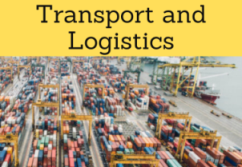Indonesia-Malaysia-Thailand Triangle
Economic Profile of Southern Thailand, Malaysia, Indonesia (Growth Triangle IMT-GT)

The Indonesia-Malaysia-Thailand Growth Triangle (IMT-GT) is a subregional cooperation initiative created in 1993 by Governments of Indonesia, Malaysia, and Thailand with the objective to speeding up the economic transformation in the less developed provinces of the IMT-Growth Triangle region.
- Introduction to the Indonesia-Malaysia-Thailand Growth Triangle (IMT-GT) - Southeast Asia ASEAN
- Structure and goals of the IMT- Growth Triangle
- Sumatra Investment and Trade Survey
- Economic Profile of the provinces of the IMT-Growth Triangle

The Subject “Indonesia-Malaysia-Thailand Growth Triangle (IMT-GT)” is included within the curriculum of the following academic programs at EENI Global Business School:

Masters: International Business, Foreign Trade.

Languages:  or
or
 Triángulo de Crecimiento Tailandia Indonesia Malasia
Triángulo de Crecimiento Tailandia Indonesia Malasia  Triangle de croissance Indonésie Malaisie Thaïlande
Triangle de croissance Indonésie Malaisie Thaïlande  Triângulo Crescimento ASEAN.
Triângulo Crescimento ASEAN.

- The mission of the Growth Triangle is to increase Foreign Trade and Foreign Direct Investment (FDI) opportunities between the members
- The private sector of the region of the Indonesia-Malaysia-Thailand Growth Triangle has played a core function in promoting economic cooperation
- With a total market of 72 million and a land area covering 602,293 km², the economic growth and development potential for the IMT-GT is immense
- The Indonesia-Malaysia-Thailand Growth Triangle sub-region is characterized by many economic complementarities, geographical proximity, and close historical, cultural, and linguistic ties

The Indonesia-Malaysia-Thailand Growth Triangle consists of:
- Fourteen provinces in Southern Thailand (Krabi, Nakhon Si Thammarat, Narathiwat, Pattani, Phattalung, Satun, Songkhla, Trang, Yala, Chumphon, Ranong, Surat Thani, Phang Nga, and Phuket) where the main religion is Buddhism
- Eight states of Peninsular Malaysia (Kedah, Kelantan, Melaka, Negeri Sembilan, Penang, Perak, Perlis, and Selangor)
- Ten provinces in the island of Sumatra in Indonesia (Aceh, Bangka-Belitung, Bengkulu, Jambi, Lampung, North Sumatra, Riau, Riau Islands, South Sumatra, and West Sumatra)
In Indonesia and Malaysia, the main religion is Islam.
The Asian Development Bank is a development partner of the IMT-GT since 2006. ASEAN Secretariat is a valuable ally of the Growth Triangle that provides the assistance and linkage to development-.
The Roadmap of the Indonesia-Malaysia-Thailand Growth Triangle (IMT-GT) identifies four economic connectivity corridors as key to increase International Trade, Foreign Direct Investment, and tourism through strengthening the regional connectivity.
Transport Corridors:

(c) EENI Global Business School (1995-2025)
Top of this page









 WhatsApp
WhatsApp